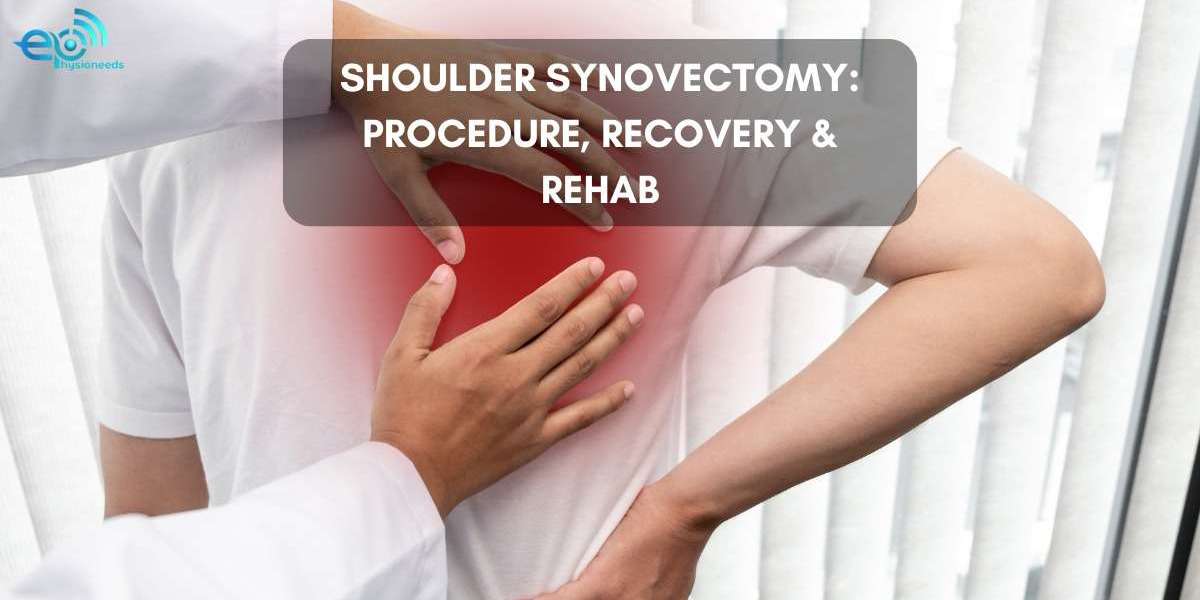Introduction
Shoulder synovectomy is a minimally invasive arthroscopic procedure used to treat synovitis and other inflammatory joint conditions. The synovium, a thin membrane lining the joint, can become inflamed due to arthritis or other disorders, leading to pain and stiffness.
Depending on the extent of the damage, the procedure can be partial or complete. Arthroscopic synovectomy helps relieve pain and restore shoulder function, with a low risk of complications. While this procedure can be done on various joints, it is most commonly performed on the knee, shoulder, ankle, elbow, and wrist. It is generally recommended when non-surgical treatments, such as medications, physical therapy, and injections, fail to provide sufficient relief.
Signs and Symptoms
Individuals with shoulder synovitis may experience:
- Persistent pain and stiffness
- Swelling and warmth around the joint
- Limited range of motion
- Difficulty with overhead activities or lifting objects
- Potential cartilage loss, which can lead to long-term joint damage
Expected Outcomes of a Synovectomy
Many patients experience significant pain relief and improved function after a synovectomy, especially if their cartilage remains largely intact. Although the surgery has low complication rates, post-operative stiffness is a common concern, especially after an open procedure compared to arthroscopy. Proper rehabilitation plays a crucial role in preventing stiffness and restoring full mobility.
PT Rehabilitation Protocol
Physical therapy (PT) is essential for a successful recovery after shoulder synovectomy. A structured rehabilitation program helps restore range of motion (ROM), build strength, and ensure a smooth transition back to daily activities.
Phase 1: Early Recovery (0-4 Weeks)
Goals: Minimize pain, reduce swelling, and restore basic mobility.
- Wear a sling for comfort (1-2 days), then discontinue.
- Gradually transition from passive to active shoulder ROM as tolerated:
- Forward Flexion: up to 140°
- External Rotation: up to 40° (with arm at the side)
- Gentle internal rotation behind the back
- Avoid arm abduction and external rotation with abduction until week 4.
- If a distal clavicle excision was performed, avoid cross-body adduction until week 8.
- Encourage grip strength exercises and elbow, wrist, and hand ROM.
- Avoid sudden movements or excessive stretching.
Phase 2: Mobility and Strengthening (4-8 Weeks)
Goals: Improve range of motion and begin gentle strengthening.
- Gradually increase ROM:
- Forward Flexion: up to 160°
- External Rotation: up to 60°
- Introduce isometric exercises:
- Deltoid isometrics
- Submaximal external/internal rotation at neutral position
- Begin resistance training with therabands as tolerated.
Phase 3: Advanced Strengthening (8-12 Weeks)
Goals: Achieve full ROM and restore strength.
- Attain full, pain-free ROM.
- Continue strengthening with resistance exercises.
- Introduce eccentric and closed-chain activities to improve stability.
- Avoid excessive strengthening to prevent rotator cuff tendonitis (limit to 3 sessions per week).
Conclusion
A well-structured rehabilitation plan is crucial for optimal recovery after a shoulder synovectomy. Gradual progression through each phase ensures safe healing, reduces complications, and improves long-term shoulder function. Working closely with a physical therapist can help patients regain strength, mobility, and overall shoulder health efficiently.



